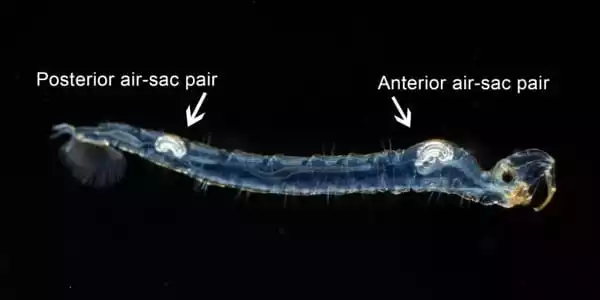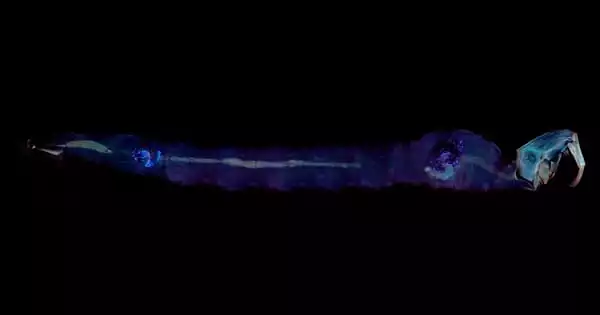Phantom midge, any bug of the Chaoboridae family that resembles a mosquito. The common name comes from the fact that the larvae are nearly translucent. Their antennas have been transformed into grabbing organs. The larvae, which are found in pools, frequently feed on mosquito larvae. The adults will not bite you.
The Chaoborus midge’s freshwater aquatic larvae are the world’s only completely planktonic insects, regulating their buoyancy via two pairs of internal air-filled sacs, one in the thorax and the other in the seventh abdominal segment. It’s unclear how these insects regulate the capacity of their air sacs. We show that the volume shifts are caused by bands of resilin in the air-wall. sac’s
Dr. Philip Matthews spent a normal afternoon in the spring of 2018 collecting dragonflies in the experimental ponds at the University of British Columbia (UBC). The zoologist had no idea he was about to go on a trip to solve a century-old entomological enigma involving a much smaller, but equally fascinating, bug. As he worked in the ponds, he noticed larvae floating in rainwater in a neighboring cattle tank.
These strange insects were floating neutrally buoyant in the water, which you just don’t see insects doing. Some insects can become neutrally buoyant for a brief period of time during a dive, but Chaoborus larvae are the only insects that get close.
Dr. Philip Matthews
The insects were freshwater aquatic larvae of the Chaoborus midge, popularly known as the ‘phantom midge’ because of its near transparency. The larvae move through lakes, ponds, and puddles like little ghosts due to their transparency.
“These strange insects were floating neutrally buoyant in the water, which you just don’t see insects doing,” Dr. Matthews explained. “Some insects can become neutrally buoyant for a brief period of time during a dive, but Chaoborus larvae are the only insects that get close.”
Solving a 100-year-old mystery with a Nobel connection
Some fish control their buoyancy by inflating a swim bladder with oxygen released from their hemoglobin. August Krogh, a Nobel laureate, found Chaoborus larvae employ a completely different system, regulating their buoyancy with two pairs of internal air-filled sacs, in 1911. He never worked out how insects regulated the capacity of their sacs in the absence of blood or hemoglobin, as vertebrates do.

A serendipitous discovery
Dr. Matthews returned to the lab after his coffee and mounted the air-sacs of the cow tank larvae on a microscope that happened to have ultraviolet light illuminating the microscope’s stage. The air-sacs began to glow blue. The blue fluorescence was caused by resilin, a nearly perfect rubber found in insect parts where elasticity is important, such as the elastic energy that fuels a flea’s remarkable jump.
“The strange thing about resilin is that it is not only extremely elastic. If you make it alkaline, it will expand, and if you make it acidic, it will contract.”
The researchers discovered that the insect did not inject gas into its air sacs to cause it to grow, thanks to the efforts of PhD student Evan McKenzie. Instead, they alter the pH of the air-sac wall, causing the bands of resilin within the air-sac wall to swell or shrink and the volume of the sac to adjust.
The Chaoborus air-sacs are mechanochemical engines that translate changes in chemical potential energy into mechanical work. “This is a truly strange adaption that we didn’t search for,” Dr. Matthews adds. “We were just wondering how they could float in water without sinking!”





